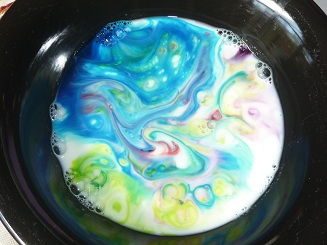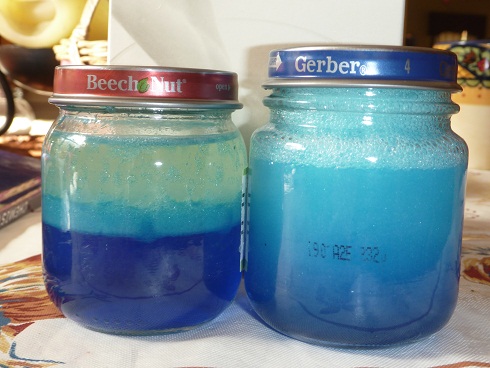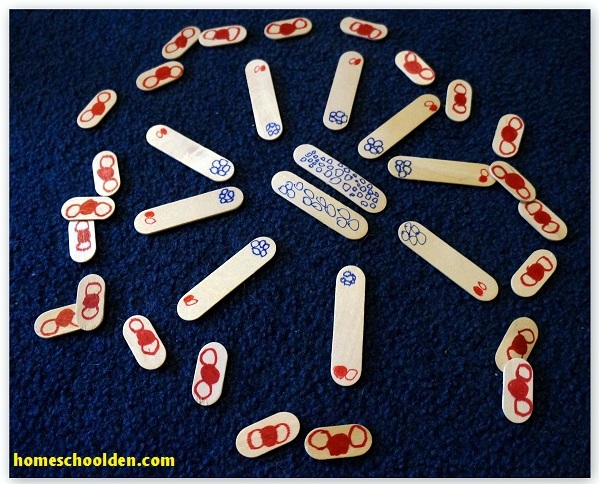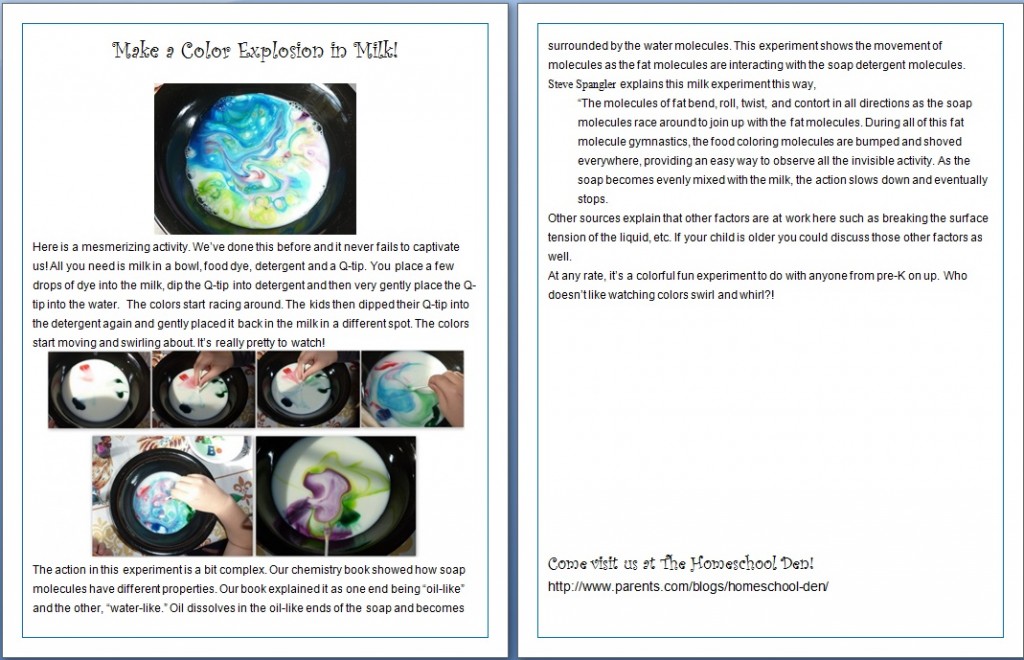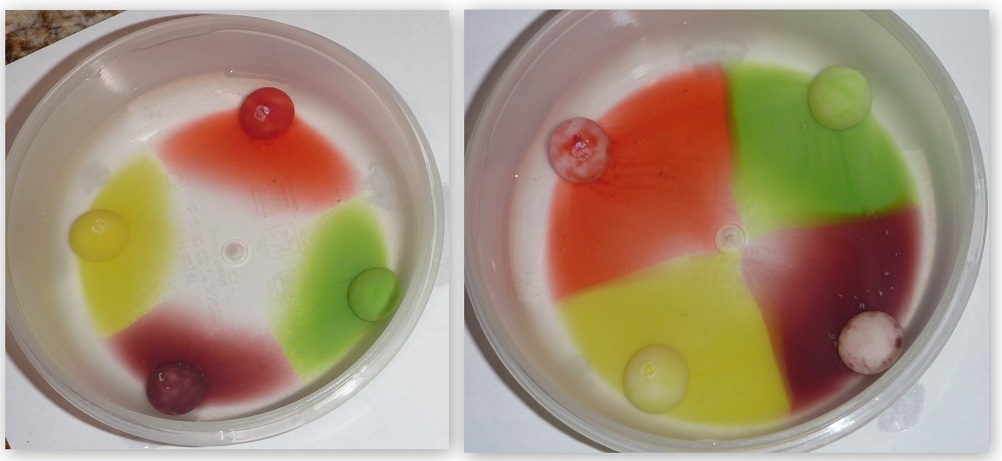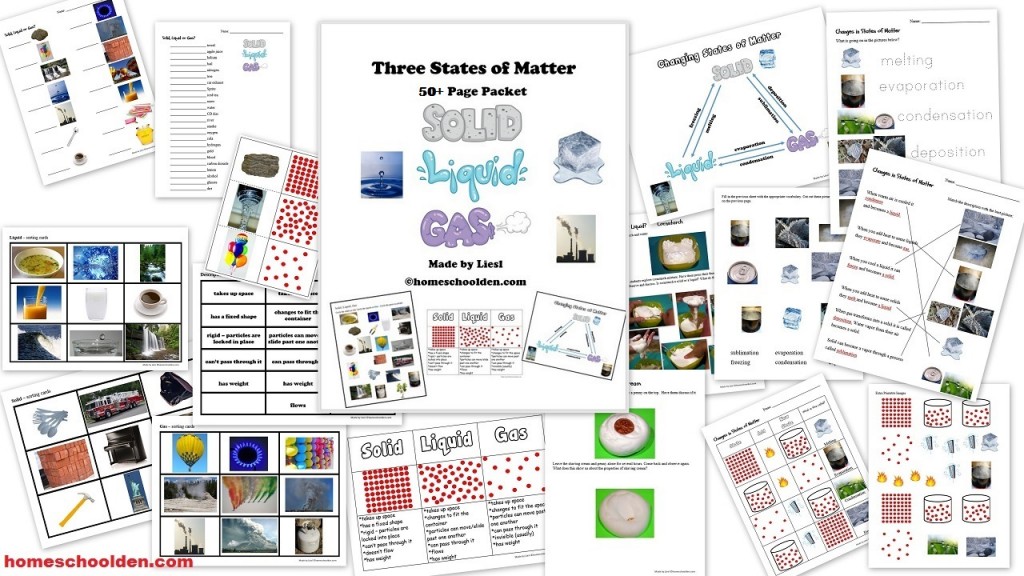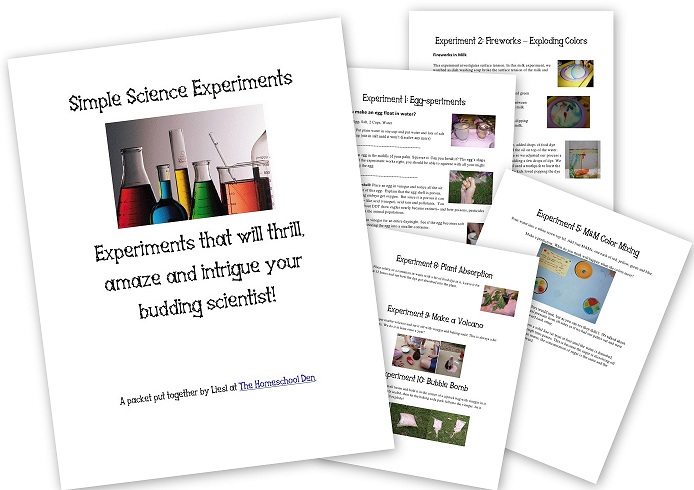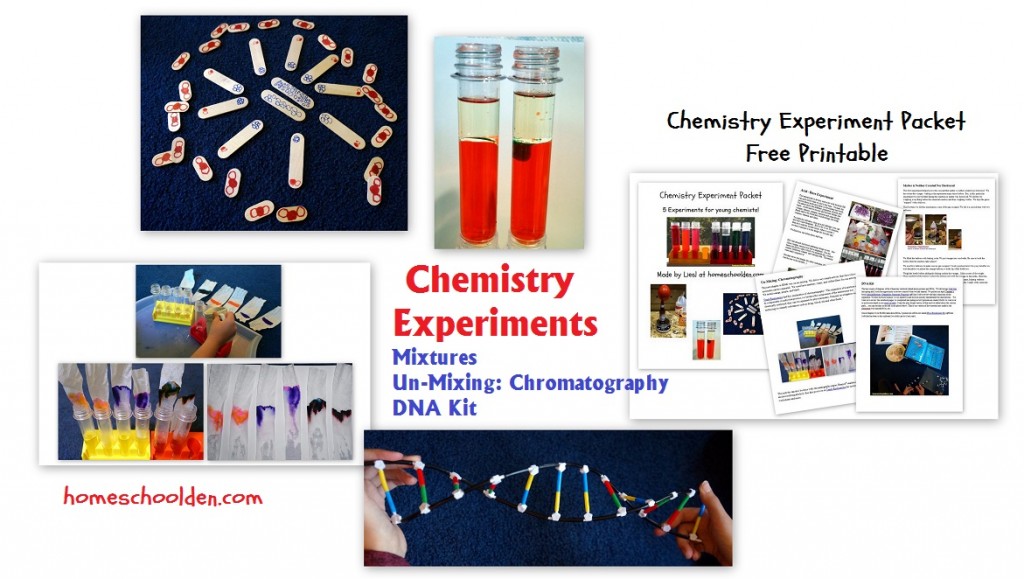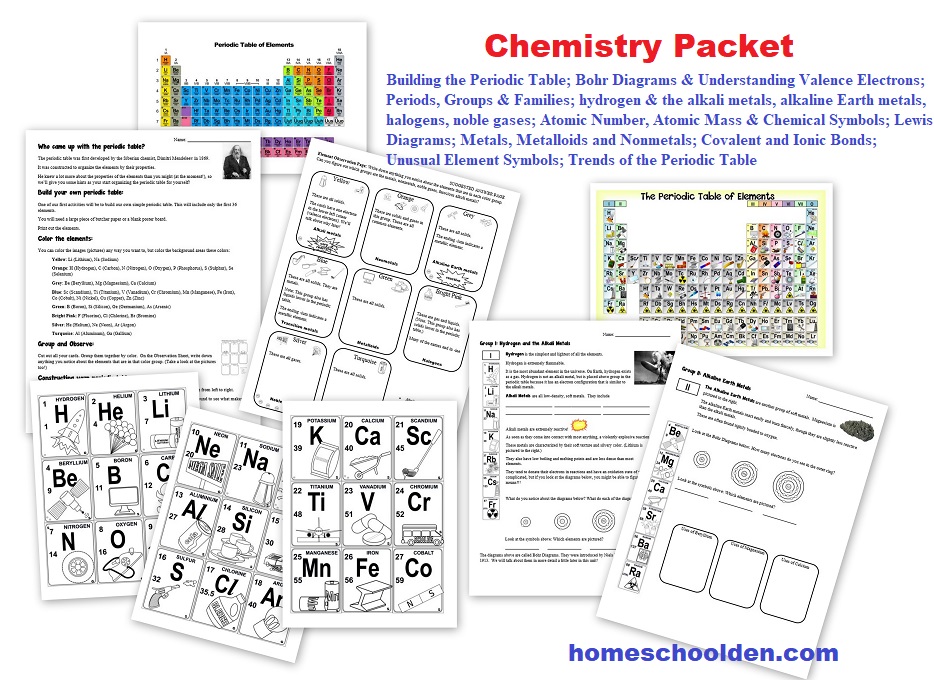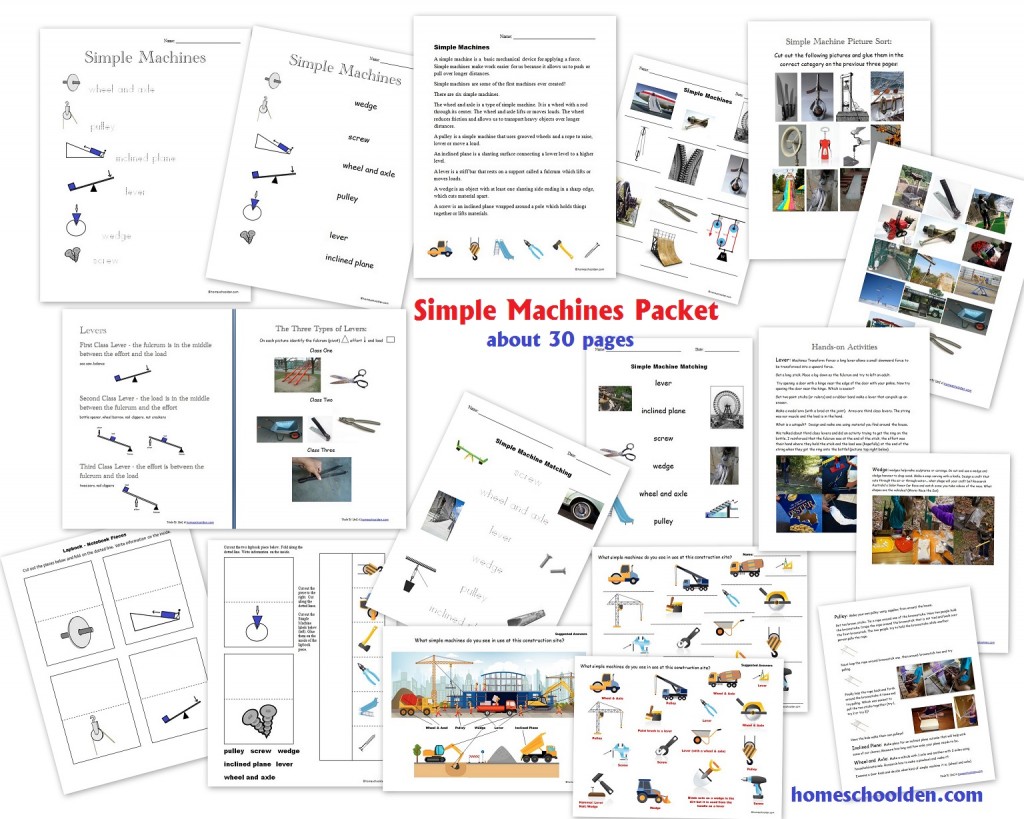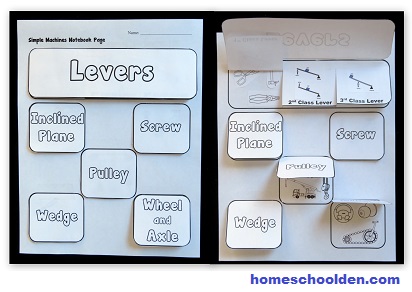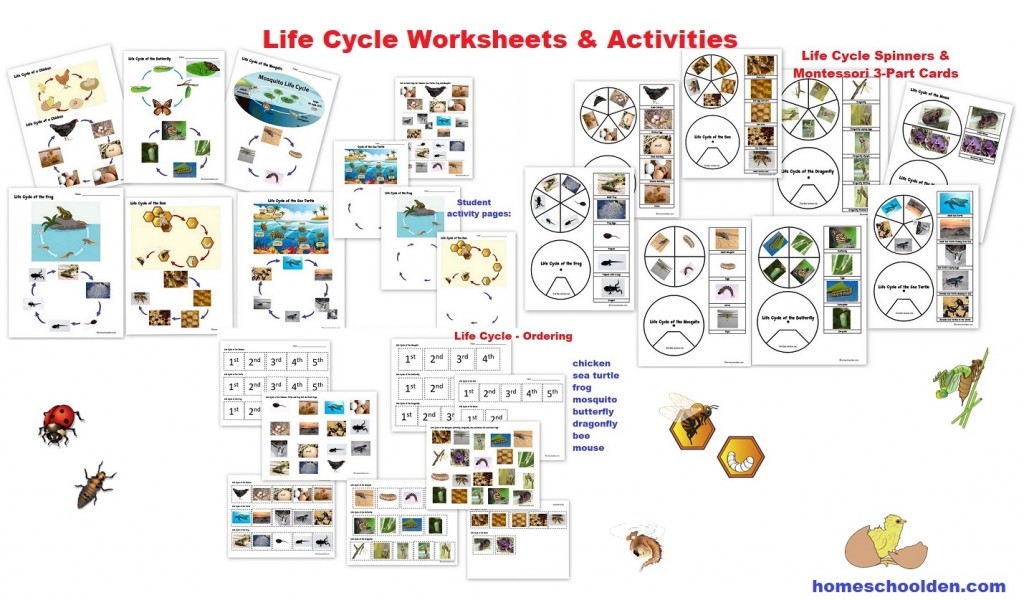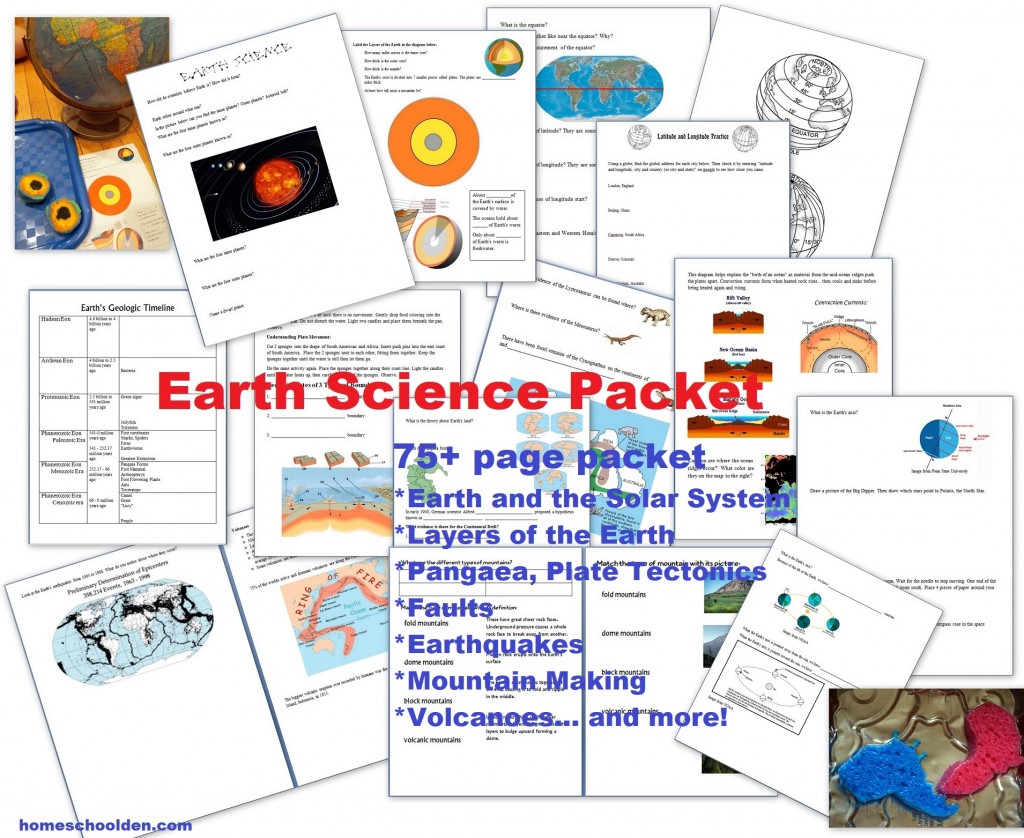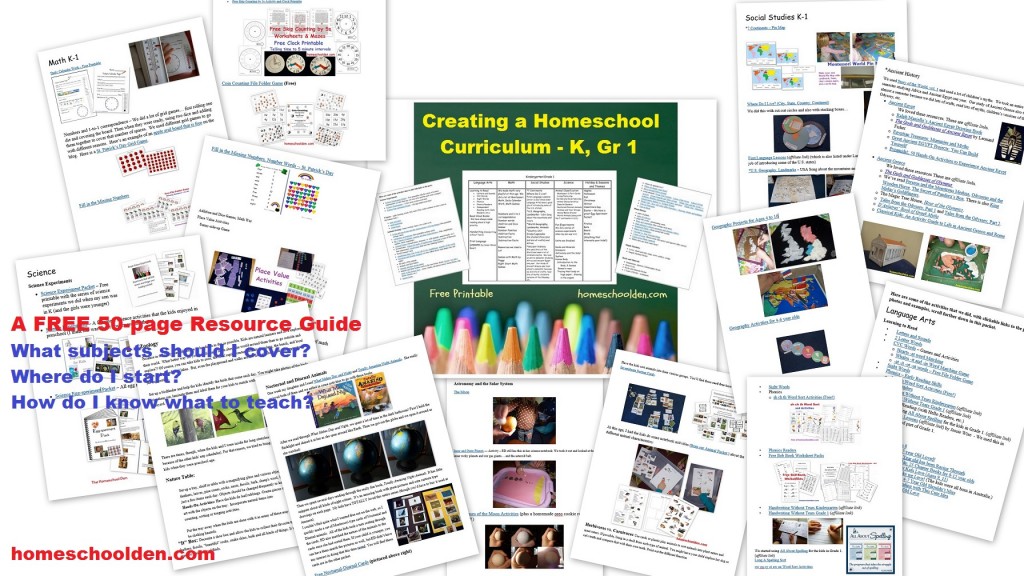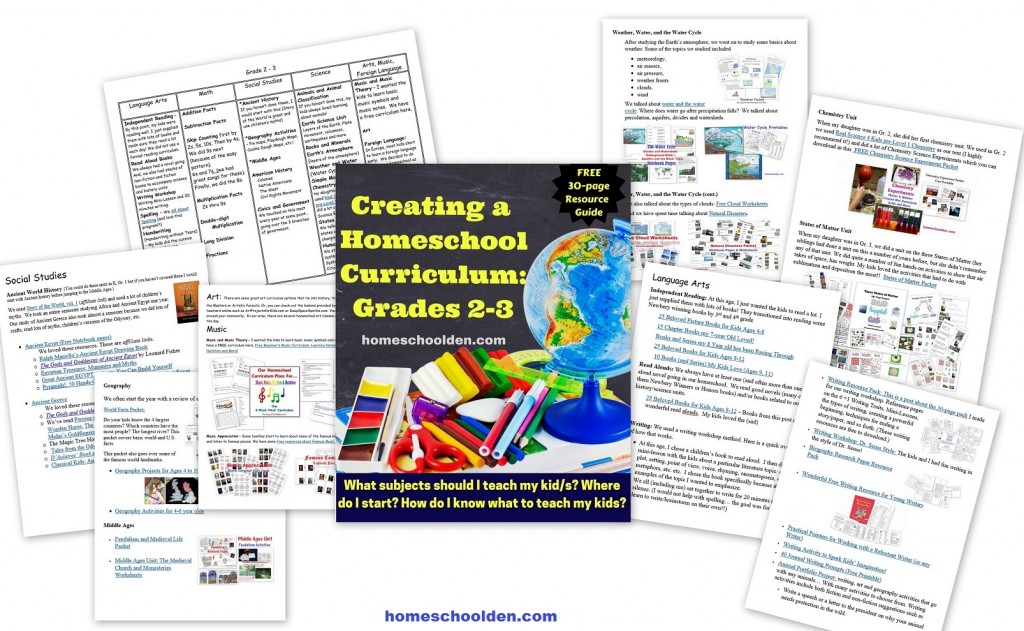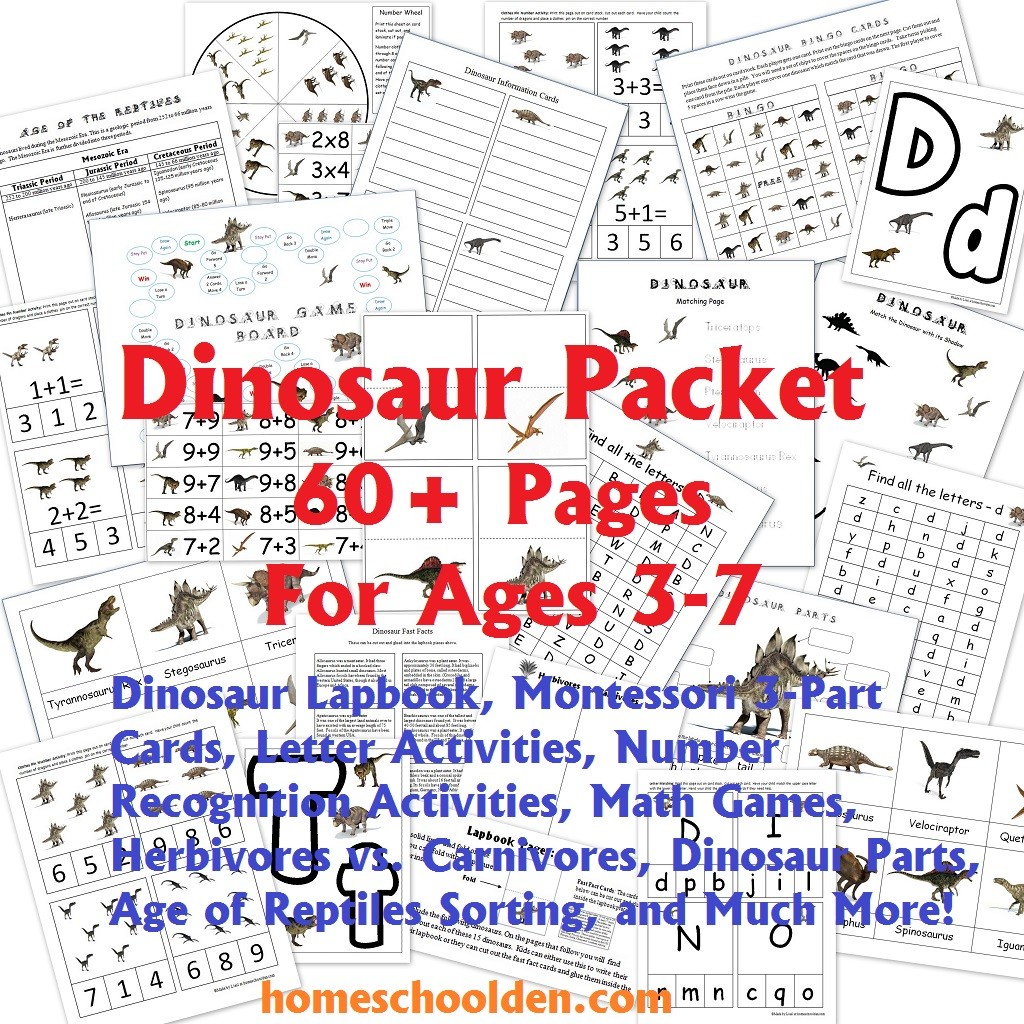Fun, Simple Science Experiments for Younger Kids! (Introducing Kids to Chemistry)
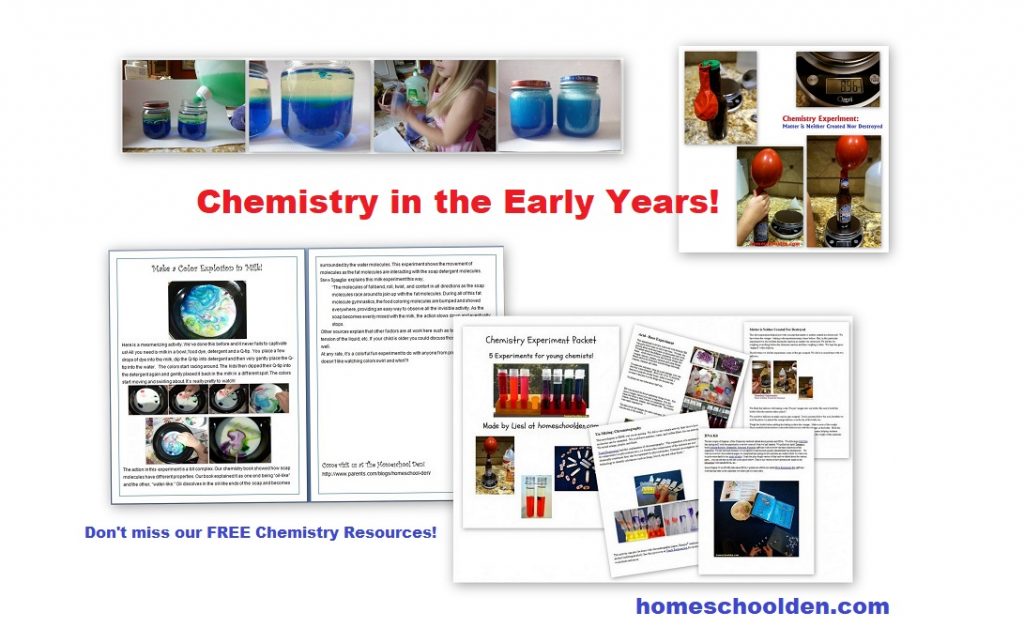
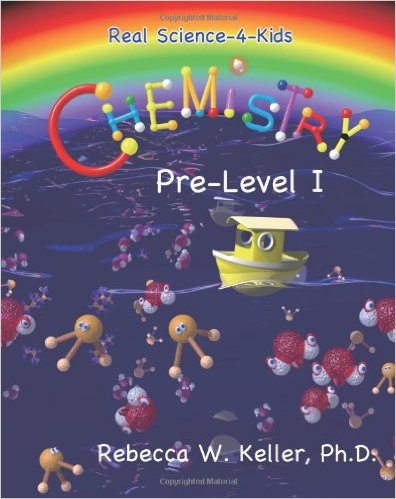
Isn’t this pretty? This was one of our experiments as we finished up our chemistry unit!
We did a little experiment to show how soap helps get your dishes clean. We took a couple of baby food jars and put oil and colored water into each. Then to one of the jars we added dish detergent. We all watched as the detergent took its time and then slowly sank down through the layer of oil. We shook both jars vigorously and then set them to the side for 20 or 30 minutes.
When we came back, we could see that the jar without detergent had separated back into two layers — oil and water. In the other jar, the oil and water still seemed to be mixed together. The older kids learned that this is called an emulsion.
While we were waiting for the experiment above to finish we went on to another mesmerizing activity. We’ve done this before and it never fails to captivate us! All you need is milk in a bowl, food dye, detergent and a Q-tip. You place a few drops of dye into the milk, dip the Q-tip into detergent and then very gently place the Q-tip into the water. The colors start racing around. The kids then dipped their Q-tip into the detergent again and gently placed it back in the milk in a different spot. The colors start moving and swirling about. It’s really pretty to watch!
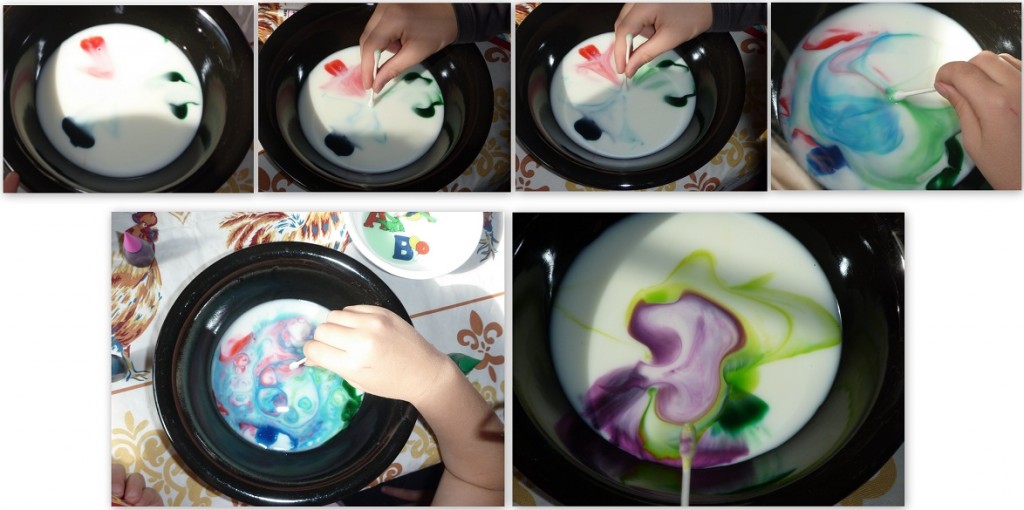
Steve Spangler explains this milk experiment this way, “The molecules of fat bend, roll, twist, and contort in all directions as the soap molecules race around to join up with the fat molecules. During all of this fat molecule gymnastics, the food coloring molecules are bumped and shoved everywhere, providing an easy way to observe all the invisible activity. As the soap becomes evenly mixed with the milk, the action slows down and eventually stops.”
Other sources explain that other factors are at work here such as breaking the surface tension of the liquid, etc. If your child is older you could discuss those other factors as well.
If your kids are a little older, you might want to do the activity I describe here about Mixtures. After reading the chapter about Mixtures in Chapter 6 in Real Science 4 Kids pre-Level 1, it was time to do some hands-on activities.
The student chemistry textbook went into quite a bit of detail about molecules that dissolve and those that don’t. It talked about oil, water and soap and how they interact. Using Popsicle sticks, we made our own diagrams of water molecules (in red), oil molecules (blue chains), and soap (with a red OH group on one end and the oil-like molecules (in blue) on the other).
See more about this activity at this post: Mixtures and grab the Chemistry Packet (which is currently free!)
At any rate, it’s a colorful fun experiment to do with anyone from pre-K on up. Who doesn’t like watching colors swirl and whirl?!
I made a copy of this experiment and the explanation of how it works that you can print off:
If you are looking for a really cute way to introduce kids to the elements, you might get Amber’s Atoms. (affiliate link) It introduces kids to the first 10 elements of the periodic table. The illustrations are really pretty. It’s a really engaging way to introduce chemistry in it’s simplest form. Each element has a large picture of the atom (showing the nucleus and electron cloud). The target age range is 2-5, but if you are introducing your kids to chemistry (and going into more detail) it might be worth it to get this for a 6 or 7 year old. You can have a really good discussion about the number of electrons and so forth. 🙂
Another great chemistry book for kids is Explore Atoms and Molecules with 25 Great Projects. (affiliate link) It has a lot of wonderful hands-on activities for kids just learning about chemistry!
Our final experiment didn’t really connect with our chemistry chapter, but was another fun, color experiment to do with the kids. We took skittles and dissolved them in water. (You can also use M&Ms) I had the kids guess whether the colors would mix or stay separate. The older kids, of course, remembered doing this a few years ago, but ED didn’t. We talked about how scientists “make predictions” and then perform experiments to see if their prediction was accurate.
Skittles (or M&Ms) have an edible dye that doesn’t dissolve in water. There was equal pressure from all sides as the dye moved towards one another so the colors stopped moving forward. I explained it to the kids as if we had our palms out and were both leaning a little bit toward each other.
Do you want to do other fun experiments with candy? Be sure to visit this great website, Candy Experiments written by Loralee, a mom of three. I visited the booth they had set up at the USA science and engineering festival a while back and the kids loved some of the experiments they had set up!
When my kids were younger, we also also talked about the Three States of Matter our packet has sorting cards and all kinds of hands-on activities that my kids loved!
Science Experiment Pack: A number of years ago, I made a packet of some of our most beloved science experiments. If you’re keen to do science experiments with your kids, here are some of the things that my kids and I have enjoyed a lot:
Download your free Science Experiment Packet
Have fun experimenting with your young scientist!!
~Liesl
Other fun Chemistry Experiments:
- Chemistry Experiments for Kids (Grade 2) – Matter is Neither Created Nor Destroyed — Acids and Bases – Free Chemistry Experiment Printable Packet (when ED was in Grade 2)
- Chemistry Experiments for Kids (Grade 2) – Mixtures, Chromatography, DNA Kit – Free Chemistry Experiment Printable Packet
- We all enjoyed the IMAX film, Molecules to the Max which is out on DVD (see more about it at this post)
Molecules to the Max (affiliate link)

We did this when my kids were in grades 4, 7 and 9. It is best for middle school or as an introduction to chemistry for older students, though my youngest learned a lot too and enjoyed doing the hands-on activities.
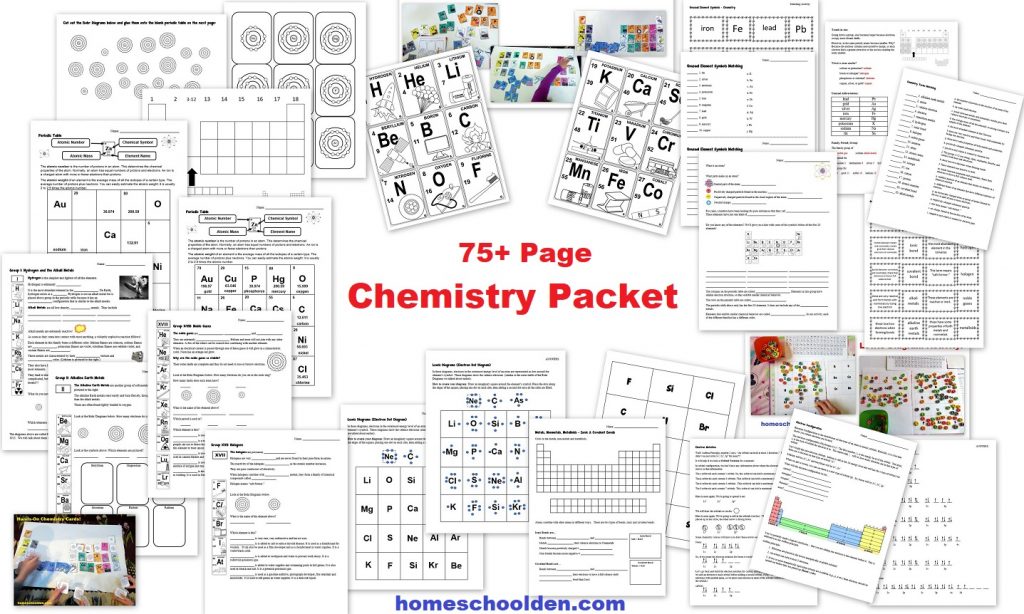

See you again soon here or over at our Homeschool Den Facebook Page! Don’t forget to Subscribe to our Homeschool Den Newsletter. You might also want to check out some of our resources pages above (such as our Science, Language Arts, or History Units Resource Pages) which have links to dozens of posts. Don’t forget to check out Our Store as well. ~Liesl
Your young learner might also be interested in some of our other units:
My kids also loved our Earth Science Unit!
You might also be interested in this FREE Resource guide:
You might enjoy our Dinosaur Unit:
Dinosaur Packet for Ages 3-7
Dinosaur Packet: Check out our 60+ Page Dinosaur Packet. It includes
- Montessori 3-Part Dinosaur Cards
- Dinosaur Lapbook
- Letter Recognition Activities
- Number Activities and Games
- Dinosaur Game Board
- Coloring Pages
- Herbivores vs. Carnivore Sorting Activity
- Fast Fact Information Cards
- Dinosaur Writing Cards
- Bingo Cards and more!
See you again soon here or over at our Homeschool Den Facebook Page! Don’t forget to Subscribe to our Homeschool Den Newsletter. You might also want to check out some of our resources pages above (such as our Science, Language Arts, or History Units Resource Pages) which have links to dozens of posts. You might want to join our free Homeschool Den Chat Facebook group. Don’t forget to check out Our Store as well.

Disclosure: Please note that some of the links in this post are affiliate links, and at no additional cost to you, I will earn a commission if you decide to make a purchase.
